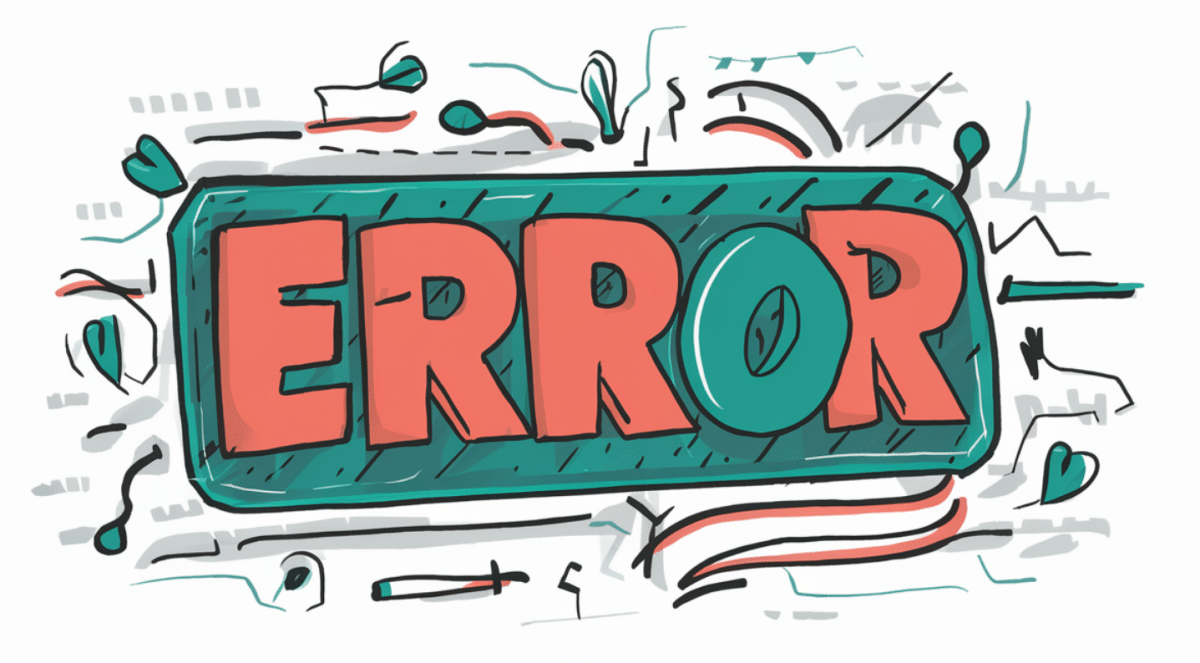It’s not always easy to determine the ideal sample size that balances practicality with statistical precision.
When you conduct surveys, finding that sweet spot is key to getting results you can trust without overdoing it. And this is where the margin of error might help.
Ready to find out more about this intriguing aspect of survey research? We will discover effective strategies for optimizing your data collection and not only.
But first…
What is margin of error in surveys?
Margin of error, often called the confidence interval, is a concept in survey research. It represents how closely the survey results mirror the opinions of the entire population.
Conducting surveys is a delicate balancing act, especially when comparing different population segments. The margin of error is a useful metric in assessing the reliability and precision of your survey.

How to calculate margin of error?
You need to understand a few key terms and their roles in the margin of error calculator:
- Sample Size (n)
It’s the number of survey respondents. A larger sample size generally leads to a smaller margin of error, as it’s more likely to represent the population accurately.
📚 Read also: Quota Sampling in Surveys: All You Need to Know.
- Confidence Level (%)
This reflects how sure you can be that the survey results fall within the margin of error. Common confidence levels are 90%, 95%, and 99%.
- Z-Score (z)
Corresponds to the chosen confidence level. For instance, a 95% confidence level typically has a z-score of 1.96.
- Standard Error (SE)
This is calculated using the sample proportion (p) and the population size (N). It’s a measure of the variability in your sample data.
- Population Proportion (p)
The percentage of respondents choosing a particular option in your survey.
The formula for calculating the margin of error is:
Margin of Error (MoE)=Z-Score×p×(1−p)nMargin of Error (MoE)=Z-Score×np×(1−p)
Here’s a breakdown of the margin of error formula:
- The z-score is multiplied by the square root of the sample proportion (p) times one minus the sample proportion, divided by the sample size (n).
- This calculation gives you the margin of error in percentage points, which you can then apply to your survey results.
For example, if you have a sample size of 1000 respondents, with 50% choosing a particular option, and you’re working with a 95% confidence level (z-score of 1.96), the margin of error would be calculated as follows:
MoE=1.96×0.50×(1−0.50)1000MoE=1.96×10000.50×(1−0.50)
The formula helps survey researchers identify the range within which the true population parameter likely falls. It also shows the reliability of the survey data.
👉🏻 Remember, a smaller sample size or a higher confidence level will result in a higher margin of error. It indicates less confidence in the survey results being representative of the general population.
👉🏻 Conversely, a larger sample size or a lower confidence level leads to a smaller margin of error, and implies more confidence in the survey’s accuracy.
👉🏻 An acceptable margin of error used by most survey researchers typically falls between 4% and 8% at the 95% confidence level.
What affects margin of error?
For a better understanding of margin error, take a look at a few aspects.
#1 Impact of sample size on margin of error
Think of sample size like a snapshot of a crowd. The bigger the crowd you capture in your photo (or sample), the clearer the picture of the entire population. A big sample means a tight, small margin of error, because it’s like getting a fuller, clearer picture of what everyone thinks. Much like how you might reduce photo size to make images easier to manage without losing too much detail, increasing your sample size helps reduce the margin of error while keeping your data concise and manageable.
#2 Confidence levels and their influence
Confidence levels show the probability that the margin of error represents the true population value. Higher confidence levels, such as 95% or 99%, make a margin of error bigger. Why? A higher confidence level needs a wider interval to capture the true population parameter.
#3 The role of population size in margin of error
When we look at total population size, it’s a bit like deciding if a small town needs the same survey tactics as a big city. Smaller groups might see more impact on margin of error than larger ones, but it’s always good to know the total number to keep things in perspective.
#4 Random sampling and error reduction
The use of a random sample minimizes random sampling error. When every member of the target market has the same chance of being picked, the sample more accurately reflects the overall population. And, in turn, leads to a more reliable margin of error.
#5 Standard deviation: understanding population variability
Standard deviation is a way of measuring how spread out everyone’s opinions are. If everyone has wildly different views, you can expect a bigger margin of error.
#6 Critical value: z-score’s effect on the margin of error
Z-score in the margin of error formula, directly affects the margin. This value changes with the desired confidence level, and a higher z-score (representing a higher confidence level) shifts up the margin of error.
#7 Representative sample: ensuring accuracy
A representative sample is like a mini-version of the entire population. If the sample accurately reflects the demographics and characteristics of the target market, the margin of error may show the true population parameter.
#8 Calculating margin of error: the formula’s significance
Understanding the margin of error formula is like having the right recipe for your favorite dish. It mixes sample size, population proportion, and z-score to tell you how far off your survey results might be from what the whole population thinks.
This often involves calculations related to standard deviation, which can be complex. Utilize a standard deviation calculator to simplify these calculations, ensuring your survey analysis is both robust and reliable.
How to increase your survey data reliability?
Check out if you know all the tips. ⬇️
01 Choose the right number of people
To get trustworthy survey data, having enough people in your survey (sample size) is key. More people mean a smaller margin of error, making the survey’s results closer to what everyone really thinks. Survey researchers need to choose a sample size that balances practicality with the need for precision, considering how sample size affects the margin.
02 Use a robust margin of error calculator
A good margin of error calculator is a big help. It uses the margin of error formula, which considers things like how many people are surveyed (sample size), the z-score, and population standard deviation to figure out the margin of error. That’ll help you figure out how trustworthy your survey results are.
03 Pick the right confidence intervals
The confidence interval you choose is really important for your survey’s reliability. A higher confidence level (like 95% or 99%) makes the margin of error bigger but means you can be more sure the survey results include the real opinions of the entire population. Pick a confidence level that gives you a good balance of certainty and useful information.
04 Get a mix of people from the total population
Your survey data is more reliable if your sample looks like the total population. The sample should have the same mix of people with all their different characteristics and opinions. The purpose of this is to make sure the survey’s margin is a true reflection of the population’s views.
05 Collect and analyzing data carefully
You need enough completed responses of good quality to make your analysis. Look at standard deviation and other statistics to understand the variety in your data. All to make more accurate error calculations.
And here you need a reliable surveying tool like Surveylab.

It offers features that help you manage your surveys efficiently. You can trust it to handle everything from setting up questions to analyzing the results. The tool is straightforward and easy to use, making your survey process smooth.
Here are some of its key features:
- User-friendly interface makes setup and execution quick.
- It supports various question types.
- Real-time data collection allows immediate analysis.
- Offers robust data security to protect respondent information.
- Integrates easily with other tools for enhanced functionality.
06 Apply correct error calculation methods
Getting correct error calculation methods right means you can be more confident about understanding the true population parameter. So, make sure you are familiar with the error formula and what the error means. There’s more to it than just math. You must know what the numbers mean for your survey and the people you’re asking.

Example situation
For most survey researchers, the focus typically falls on how sample size affects the margin of error and the accuracy of the collected data.
When dealing with statistical measurements, such as the mean or median, researchers often encounter the concept of ‘maximum margin’—a term that signifies the extent of potential deviation from the true value in a normal distribution. The error tells us about the reliability of our data. It’s also a statistic expressing the level of certainty in the poll result.
For instance, in a scenario where two candidates are in a statistical dead heat, the highest margin of error could greatly influence the interpretation of the survey’s outcome. Understanding this concept is critical, especially when dealing with a smaller group or a specific subset of the total number of respondents.
The z-value, a key component in the following formula for calculating the margin of error, helps researchers feel confident about the values they present.
An example question might be to determine which product features target audiences prefer. Knowing the margin of error helps you make solid conclusions.

Key Takeaways
- Think about your sample size – the number of people you survey really affects your margin of error and how accurate your results are.
- Choose a good confidence level – find the right balance between needing precise results and being practical. Higher confidence means a bigger margin of error but more trust in your results.
- Get the margin of error right – use the margin of error formula carefully, and consider how many people you survey, the z-score, and population proportion to get accurate and reliable results.
- Make sure your sample represents everyone – aim for a sample that reflects the whole population’s variety to reduce error margins and make your survey more valid.
- Reduce random sampling error – use random sampling so everyone has an equal chance of being included, making your survey data more reliable.
- Analyze your data well – Look at your data carefully, focus on standard deviation and other statistics to understand the variability, and improve your error calculations.
- Apply error calculation methods properly – understand and use the right methods for calculating error, and interpret what the numbers mean for your survey and the people you’re asking to accurately determine what the whole population thinks.
Margin of error concluded
The margin of error is your reality check in survey research. It tells you how much you can trust your results.
Paying attention to your sample size, picking the right confidence level, and using proper error calculation methods are non-negotiable for credible surveys.
So take the tips, apply them rigorously, and let your surveys truly speak for the people! Sign up for Surveylab.
FAQ on the margin of error
Let’s find out what the most frequently asked questions are:
Margin of error shows how much you can expect survey results to reflect the true opinions of the entire population. It helps you understand the accuracy of your survey results. A smaller margin of error means more reliable results.
To calculate the margin of error, you use a formula that includes the sample size, the confidence level, and the population proportion. This formula considers how confident you are in the survey results and how many people answered your survey. The calculation tells you how close the survey results are likely to be to the true opinions of the whole population.
Choosing the right sample size is crucial because it affects the margin of error. A larger sample size usually gives a smaller margin of error, making your survey results more accurate. You need to balance having enough people to reduce error while keeping the survey manageable.

Leave a Message
You must be logged in to post a comment.